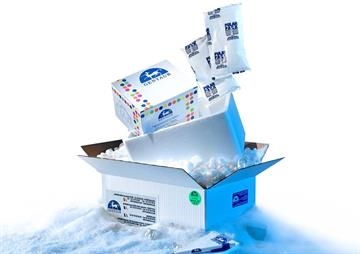- Categories
- Specials and Offers
- Custom Services
- Products
Rat IGF1 ELISA Kit


Rat IGF1 ELISA Kit
1141.50 €
In Stock
quantity
product details
Catalog number: 91 - 55R-1593
Product Category: Business & Industrial > Science & Laboratory
FitzgeraldGentaur
Size: 1 kit
Related Products
55R-1839
Human IGF1 ELISA Kit
IGF1 ELISA Kit for the detection of human IGF1 in the research laboratory
1041.00 €
OKEH04508
Igf1 ELISA Kit (Mouse) (OKEH04508)
Description of target: This gene encodes a member of the insulin-like growth factor (IGF) family of proteins that promote growth and development during fetal and postnatal life. This gene is predominantly expressed in the liver and the encoded protein undergoes proteolytic processing to generate a disulfide-linked mature polypeptide. Transgenic disruption of this gene in mice results in reduced postnatal survival and severe growth retardation. Mice lacking the encoded protein exhibit generalized organ hypoplasia including underdevelopment of the central nervous system and developmental defects in bone, muscle and reproductive systems. Alternative splicing results in multiple transcript variants encoding different isoforms that may undergo similar processing to generate mature protein.;Species reactivity: Mouse;Application: ;Assay info: Assay Methodology: Quantitative Sandwich ELISA;Sensitivity: 19.9 pg/mL
1136.20 €
OKCD00215
IGF1 ELISA Kit (Mouse) (OKCD00215)
Description of target: ;Species reactivity: Mouse;Application: ELISA;Assay info: Assay Methodology: Quantitative Sandwich Immunoassay;Sensitivity: < 0.065 ng/mL
1253.20 €
OKCD01184
IGF1 ELISA Kit (Rabbit) (OKCD01184)
Description of target: The insulin-like growth factors, isolated from plasma, are structurally and functionally related to insulin but have a much higher growth-promoting activity. May be a physiological regulator of [1-14C]-2-deoxy-D-glucose (2DG) transport and glycogen synthesis in osteoblasts. Stimulates glucose transport in bone-derived osteoblastic (PyMS) cells and is effective at much lower concentrations than insulin, not only regarding glycogen and DNA synthesis but also with regard to enhancing glucose uptake. May play a role in synapse maturation. Ca2+-dependent exocytosis of IGF1 is required for sensory perception of smell in the olfactory bulb. Acts as a ligand for IGF1R. Binds to the alpha subunit of IGF1R, leading to the activation of the intrinsic tyrosine kinase activity which autophosphorylates tyrosine residues in the beta subunit thus initiatiating a cascade of down-stream signaling events leading to activation of the PI3K-AKT/PKB and the Ras-MAPK pathways. Binds to integrins ITGAV:ITGB3 and ITGA6:ITGB4. Its binding to integrins and subsequent ternary complex formation with integrins and IGFR1 are essential for IGF1 signaling. Induces the phosphorylation and activation of IGFR1, MAPK3/ERK1, MAPK1/ERK2 and AKT1 (By similarity).By similarity
 <p>Manually curated information which has been propagated from a related experimentally characterized protein.</p>
 
 
 <p><a href="/manual/evidences#ECO:0000250">More…</a></p> Manual assertion inferred from sequence similarity toiUniProtKB:P05017 (IGF1_MOUSE)UniProtKB:P05019 (IGF1_HUMAN) ;Species reactivity: Rabbit;Application: ELISA;Assay info: Assay Methodology: Quantitative Sandwich Immunoassay;Sensitivity: < 35 pg/mL









